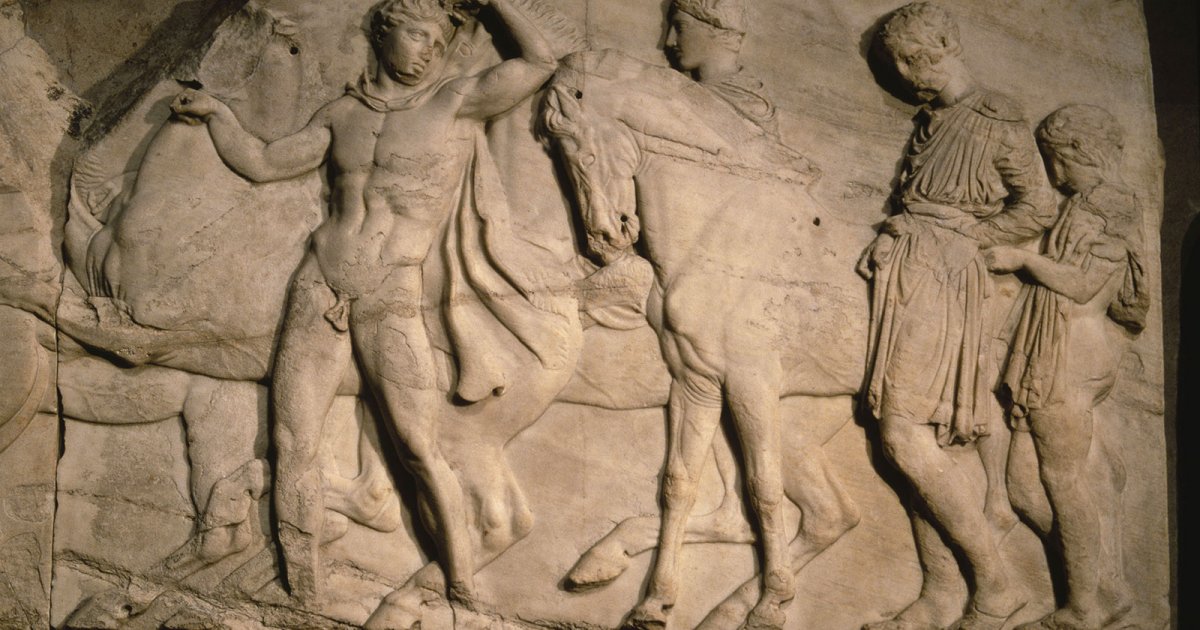BRITISH MUSEUM, Parthenon Marble High Reliefs
 Language: English / USA
Language: English / USA
Now let me tell you about the Parthenon's exterior decorations, beginning with the so-called "metopes", which are the Doric-style high reliefs of the frieze that ran just below the facade's triangular pediment.
Originally there were 92 high reliefs, and here at the British Museum you'll see 15. They represent mythological battle scenes that are the symbol of the struggle between rational order and the dark powers of chaos, between man's ability to control and his primordial instincts: a conflict that had been overcome by the age of Pericles, the great politician and general who had the Parthenon built and decorated.
The high reliefs were made before the temple's other sculptural complexes, as you can infer from their more archaic style. It may also be that the various artists had difficulty adjusting to the new concepts devised by Phidias, who according to a well-known passage by the Greek historian and biographer Plutarch, "supervised everything".
Another fascinating masterpiece that you will see shortly is the bas relief frieze that was just beneath the ceiling on the exterior part of the Parthenon's rear cella: it ran along all four sides for a total length of about 160 meters and a height of about one meter. The British Museum has about half.
They depict the procession that was organized in Athens for the Panathenaic Games, a celebration that was held every four years to commemorate the city's founding; it was attended by magistrates, people bringing gifts, musicians, knights, and representatives of every class of the population. The procession departed from the Kerameikos district and went up to the Acropolis, bringing sacrificial victims and a precious votive garment that was specially embroidered with scenes from the myth of Athena.
The procession is divided into two groups that depart from the cella and join on the opposite side, at the entrance, where the gods of the Olympus who receive the garment are depicted.
The actual procession also ended in front of the temple: in fact, the sacred building's marble art expresses the Athenians' pride and their privileged relationship with the gods. The procession slowly and solemnly continues, and culminates in the strange and surprising image of the gods seated as communal mortals and depicted with the security of those who feel they belong to a higher civilization.
FUN FACT: in the nearby rooms you can also see the remains of the decoration from the tomb of King Mausolus of Halicarnassus that was built in the 4th century BC.
Considered one of the seven wonders of the ancient world, the tomb gave rise to the word "mausoleum" to define a monumental tomb.



